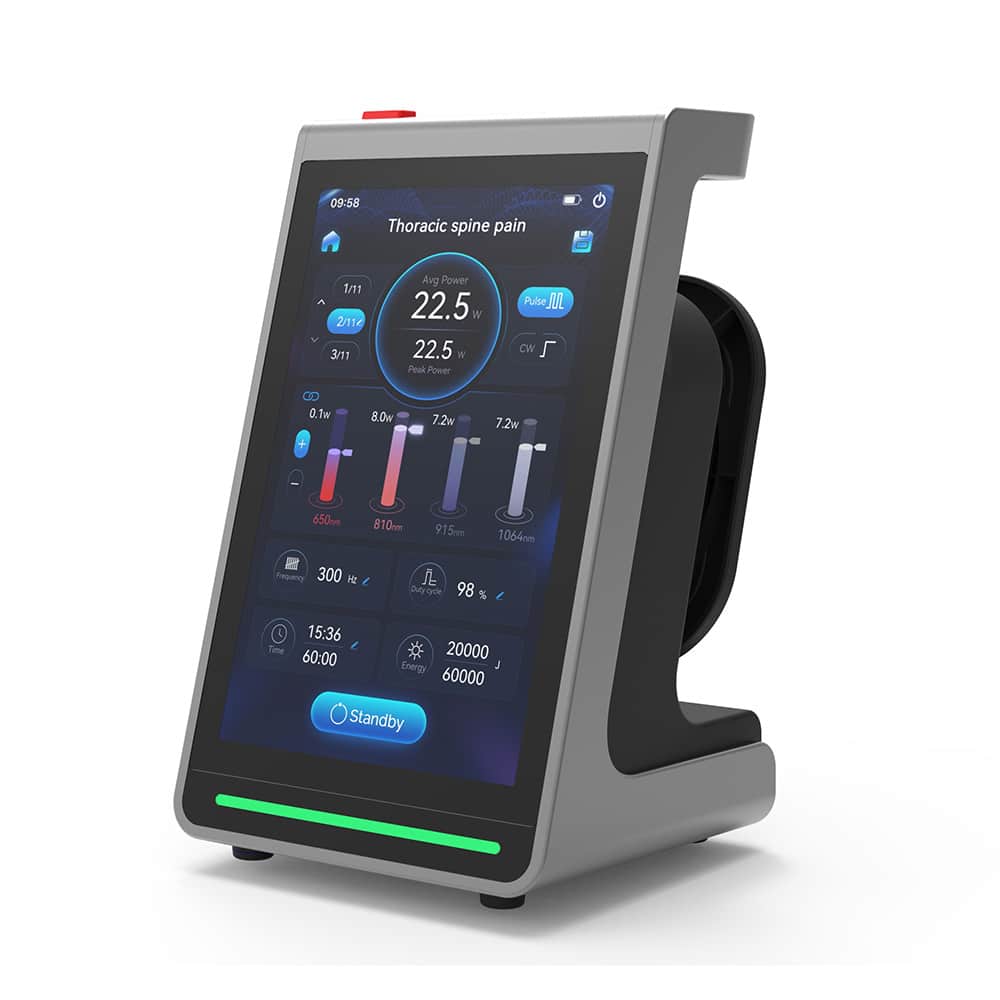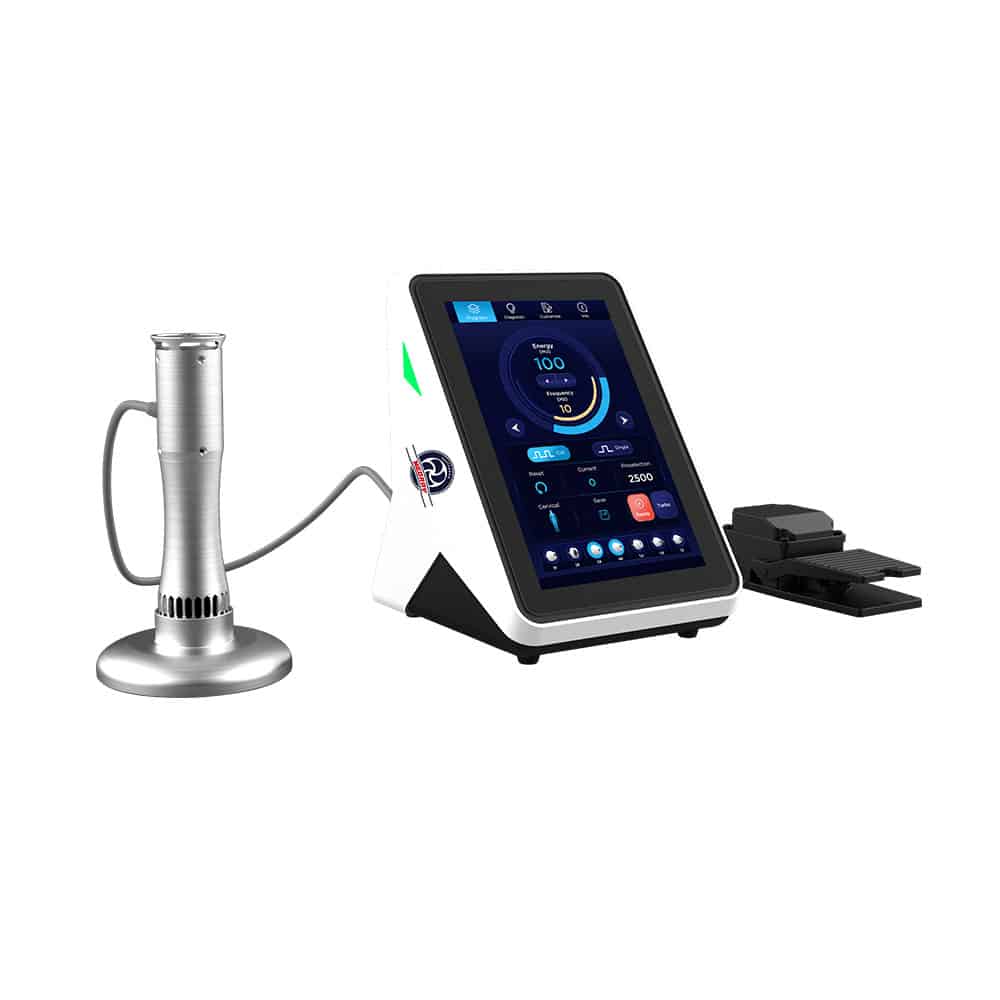What Does “Integration” Mean in a Clinical Setting?
After standardizing clinic parameter sets (a process outlined here) the next step is integration. This phase isn’t about adding more work to an already full schedule. Instead, it focuses on bringing that standardization into everyday operations with minimal variability.
The goal is reliability. Each visit should follow a predictable pattern so that both clinical decisions and scheduling remain consistent across practitioners and patient types. Integration ensures that every member of the clinical team knows what to do, when to do it, and how to document it.
Three core components drive this process:
- Placement in the schedule template
- Role-based hand-offs
- Timing and flow control
Let’s explore how each element supports consistent, efficient care delivery—particularly in clinics where laser and shockwave therapy are used as part of an evidence-informed approach to tissue stimulation, circulation improvement, and pain relief.
-
How Should Placement Be Structured Within the Schedule Template?
Integration begins with deliberate placement of the modality block within your clinic’s schedule template. This is the “where” and “when” of the process.
Instead of relying on ad-hoc decisions that can disrupt timing, decide explicitly which visit numbers or clinical scenarios include the modality. Once identified, add those therapy blocks directly to the schedule.
For example, if subacromial shoulder follow-ups and chronic Achilles progressions are frequently seen in your clinic, assign a defined window for those visit types only. Limiting initial placement helps the team maintain focus and consistency before expanding to additional conditions or body regions.
This pre-placement approach ensures time discipline—reducing the “drift” that often occurs when modalities are inserted spontaneously into visits. Once performance metrics stabilize, the same standardized process can be scaled across other clinical lanes with ease. You can integrate laser and shockwave therapy the same way.
-
What Role Do Hand-Offs Play in Integration?
Clear role delineation is essential to maintaining efficiency and minimizing variability—especially at the busiest points in a visit.
- The assistant or technician prepares the treatment room, retrieves the appropriate clinic parameter set for the target region, and starts a visible timer for the defined delivery window.
- The clinician performs the indication screen, applies the standardized parameter set, and conducts the same objective re-test defined for that visit type. Start and stop times, along with measured outcomes, are then recorded in a consistent location within the patient note.
To reinforce these steps, many clinics adopt a brief, visible checklist at each station:
- Screen → Set → Apply (within window) → Re-test → Document
This checklist ensures process fidelity without increasing the documentation burden. Everyone follows the same rhythm, which enhances both clinical quality and administrative clarity. Strong hand-off language also supports front-desk and staff communication.
-
How Can Timing and Room Flow Improve Reliability?
Timing defines whether integration succeeds or fails. The focus is on containing the modality within its designated window so that the rest of the visit remains predictable.
Two-Room Model
In this model, while the timer runs in one room, the clinician completes the evaluation or reassessment in another. When they return, the parameter set is already loaded, and the re-test is pre-selected. This allows the application and measurement to occur seamlessly within the reserved time frame.One-Room Model
For single-room clinics, the principle remains the same: setup must be fully complete before therapy begins, and the re-test must be confirmed. The timer—not the wall clock—dictates when the block ends. This preserves the integrity of the remaining visit and ensures each component receives the right amount of attention.The consistent use of timing tools reinforces the concept that efficiency and accuracy are complementary—not competing—priorities.
-
What Should Be Reviewed During Early Integration?
During the first two weeks of integration, a light-touch review helps ensure the new system functions as intended.
Each lane should evaluate two key questions:
- Did the delivery window hold under routine clinical conditions?
- Did the single re-test value contribute meaningfully to the next visit’s plan (e.g., continue, adjust, or omit)?
If time consistently slips, the cause usually lies in setup timing or difficulty retrieving the correct parameter set. Addressing those friction points early prevents more disruptive changes later.
If the measurement fails to inform decision-making, confirm that your re-test is feasible, repeatable, and aligned with the clinical goal. Once validated, hold it constant to preserve comparability across visits. This is the same logic used when deciding when to apply laser or shockwave first in a session.
What Are the Outcomes of a Well-Integrated System?
When placement, hand-offs, and timing become consistent, the modality block transitions from a “special task” to a routine part of care delivery.
The benefits include:
- Predictable duration: Sessions begin and end as planned.
- Interpretable measurement: Objective re-tests provide useful data for ongoing care decisions.
- Standardized documentation: Notes look uniform across clinicians and visit types.
This reliability sets the foundation for growth. Extending integration to additional visit types or conditions becomes a simple “copy-and-paste” operation—requiring no reinvention of workflow or roles. That stability also supports long-term clinic ROI with laser and shockwave.
Why Integration Matters for Clinical and Business Outcomes
From a business and operational standpoint, integration minimizes variability—the hidden cost of inconsistency. Predictable timing allows better resource planning, improves clinician satisfaction, and enhances the patient experience by reducing wait times and confusion.
Clinically, it ensures that therapeutic modalities—such as laser therapy—are delivered within well-defined parameters that align with current evidence and cleared indications. Consistency builds both clinical confidence and patient trust.
Explore our Class 4 Lasers and Shockwave Therapy Device
Laser

Explore Medray’s Class 4 Lasers
Medray’s Class 4 therapeutic lasers are designed to support circulation, tissue stimulation, and pain relief through a streamlined, repeatable workflow. Discover how laser therapy integrates seamlessly into busy clinics while providing a contact-free option for sensitive presentations.
Shockwave

Explore Softshock 2.0 (RPW)
Support for clinic workflow integration
Take the Next Step Toward Consistent Visit Flow
Ready to bring structured timing, clean hand-offs, and defined modality placement into your daily schedule? Medray helps clinics implement standardized laser workflows and train staff on repeatable visit rhythms that hold up on busy days.
Call us at (573) 745-1086 or visit our Contact Us page to schedule a clinical workflow walkthrough for your team.
Medray Laser & Technology manufactures and distributes FDA-cleared medical devices designed to support circulation, tissue stimulation, and pain relief. Our products are intended for use by licensed healthcare professionals. While clinical research and practitioner experience support the use of laser and radial pressure wave (RPW) therapy in various applications, some uses described in this article may be considered off-label and are not explicitly cleared by the FDA. Patients should consult their healthcare provider to determine the best treatment for their individual needs. The information provided in this article is for educational purposes only and should not be considered medical advice or a substitute for consultation with a licensed medical professional.
Educational content is for licensed healthcare providers and may include discussion of clinical uses not cleared by the FDA. Provided for scientific exchange and not intended as promotional.
The FDA has cleared therapeutic lasers and shockwave devices for increasing circulation, tissue stimulation, and pain relief. Some of the use cases described in this article reflect how clinicians may apply shockwave therapy in practice, based on peer-reviewed research. This information is provided for educational purposes only and does not imply FDA clearance or approval for specific conditions.
